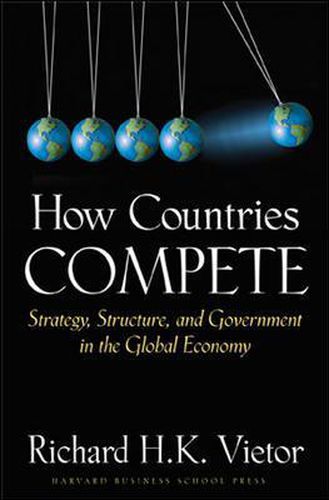Readings Newsletter
Become a Readings Member to make your shopping experience even easier.
Sign in or sign up for free!
You’re not far away from qualifying for FREE standard shipping within Australia
You’ve qualified for FREE standard shipping within Australia
The cart is loading…






Business and political leaders often talk about what their respective countries must do to compete in the world economy. But what does it really mean for a country to compete, and how do they do this successfully? As the world has globalized, countries develop strategies to compete for the markets, technologies, and skills that will raise their standards of living. These government strategies can make - or break - a nation’s efforts to drive and sustain growth. In How Countries Compete: Strategy, Structure and Government in the Global Economy, Richard Vietor shows how governments set direction and create the climate for a nation’s economic development and profitable private enterprise. Drawing on history, economic analysis, and interviews with executives and officials around the globe, Vietor provides rich and insightful examinations of different government approaches to growth and development - leading to both success and failure. Individual chapters focus on the unique social, economic, cultural, and historical forces that shape governments’ approach to economic growth. The countries discussed include: China, India, Japan, Singapore, the United States Mexico, Russia, Saudi Arabia, and South Africa. Vietor challenges the widespread notion that, in market-driven economies such as the United States, a strong government can only hinder business success. A provocative account and a rich resource, How Countries Compete offers potent insights into how the business environment has evolved in crucial nations-and what its trajectory might look like in the future.
$9.00 standard shipping within Australia
FREE standard shipping within Australia for orders over $100.00
Express & International shipping calculated at checkout
Business and political leaders often talk about what their respective countries must do to compete in the world economy. But what does it really mean for a country to compete, and how do they do this successfully? As the world has globalized, countries develop strategies to compete for the markets, technologies, and skills that will raise their standards of living. These government strategies can make - or break - a nation’s efforts to drive and sustain growth. In How Countries Compete: Strategy, Structure and Government in the Global Economy, Richard Vietor shows how governments set direction and create the climate for a nation’s economic development and profitable private enterprise. Drawing on history, economic analysis, and interviews with executives and officials around the globe, Vietor provides rich and insightful examinations of different government approaches to growth and development - leading to both success and failure. Individual chapters focus on the unique social, economic, cultural, and historical forces that shape governments’ approach to economic growth. The countries discussed include: China, India, Japan, Singapore, the United States Mexico, Russia, Saudi Arabia, and South Africa. Vietor challenges the widespread notion that, in market-driven economies such as the United States, a strong government can only hinder business success. A provocative account and a rich resource, How Countries Compete offers potent insights into how the business environment has evolved in crucial nations-and what its trajectory might look like in the future.